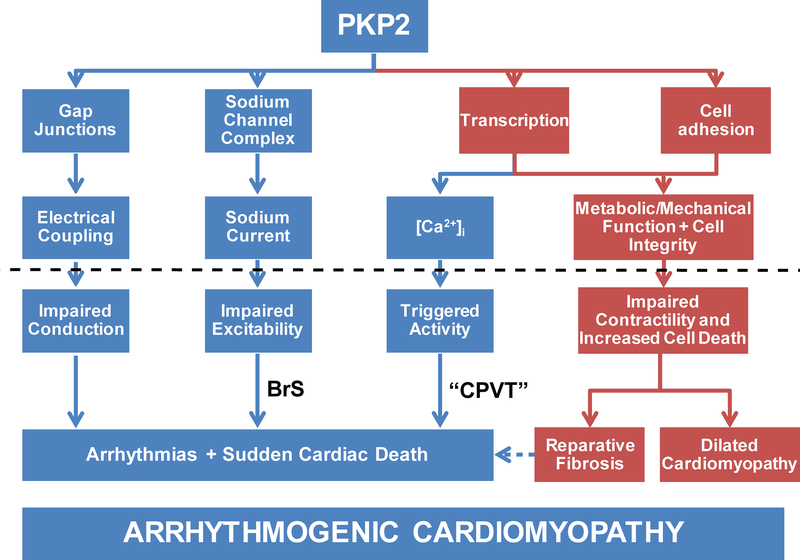Figure 6:
PKP2 as a pleiotropic gene. Deficiencies in PKP2 have been associated with at least four downstream effects: integrity of gap junctions and hence electrical coupling; function of the sodium channel complex and consequently, sodium current properties; cell adhesion to maintain mechanical integrity, and regulation of transcription which affects both, metabolic/mechanical function, as well as the regulation of intracellular calcium concentration -[Ca2+]i. If disturbed (dotted line) each of the four arms can lead to either an electrical or a structural phenotype. A dysfunction along all four arms would yield the complete arrhythmogenic cardiomyopathy phenotype. But not all arms have to be affected in all cases and as such, a walk downstream of the “sodium channel complex” arm would lead to a BrS-like phenotype; downstream of transcription-[Ca2+]i would yield a phenotype resembling CPVT, whereas a mechanical phenotype of dilated cardiomyopathy would also be possible. As such, a pleiotropic gene can result in one or more of multiple, seemingly unrelated phenotypes. (Reproduced with permission from reference76. )

